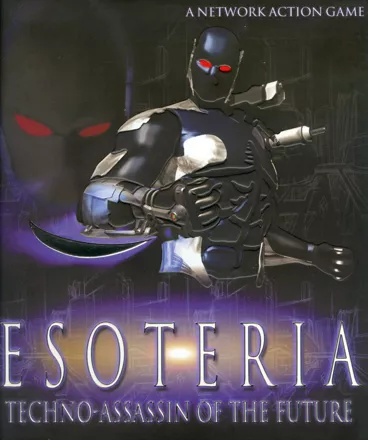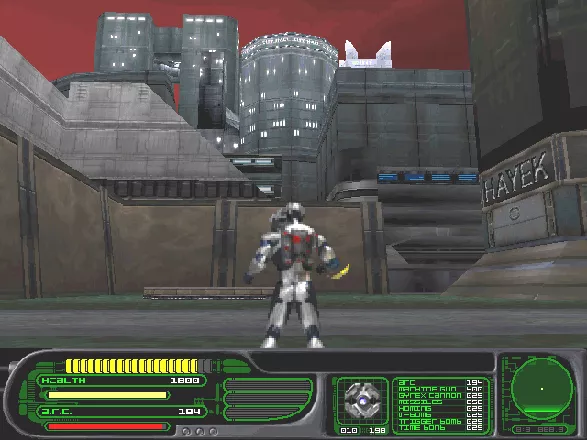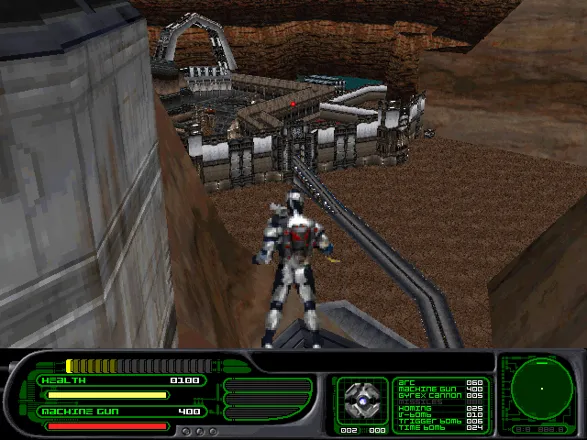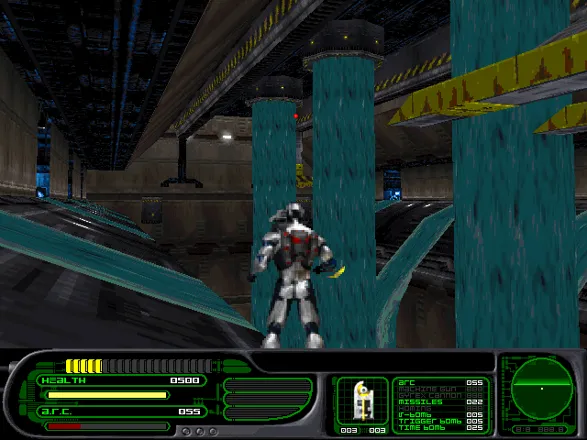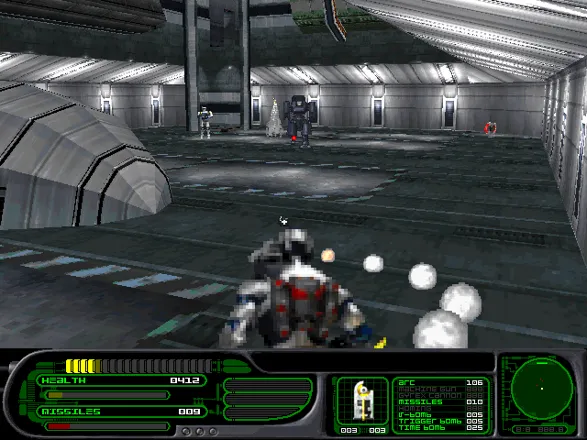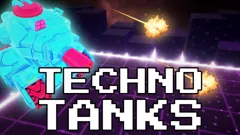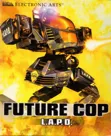Esoteria: Techno-Assassin of the Future
Description
Esoteria is a third person shooter, with emphasis on stealth and sniping. This is the only game that made it out of Mobeus Design before the company folded.
A nuclear weapon has been stolen by terrorists intent on destroying the land of Esoteria and its colonies, and you must stop them. You are extremely outnumbered, by well equipped enemies with innovative AI.
A special low-reflectance skin makes stealth your main advantage. This, coupled with a sniper-scoped main weapon offer a chance of success at a difficult mission. Frontal assaults will usually prove ineffective at accomplishing your goals. This not a run and gun shooter. There are varied missions, with plot twists unfolding depending on your actions.
Screenshots
Credits (Windows version)
99 People (34 developers, 65 thanks) · View all
| Producer | |
| Associate Producer | |
| Lead Programmer | |
| Art Director | |
| Story writer | |
| Programmers | |
| Enemy AI | |
| Low level Graphic Engine | |
| Conceptual Artist | |
| Interface Design | |
| 3D Artists | |
| Graphic Artists | |
| Cinematic Animation | |
| Lead World Designers | |
| [ full credits ] | |
Reviews
Players
Average score: 3.9 out of 5 (based on 4 ratings with 1 reviews)
Unique, atmospheric -- if very challenging
The Good
For me, the music and sound effects contributed to a sense of realism, immediacy, and seriousness. I feel that there is strong meaning in the plot's moral issues, and have summarized those issues here:
Is it okay to violate ethics by creating a hideously capable assassin, a self-aware combination of genetic engineering and robotics, if the reason is to be able to stop wars and protect your people? What if someone is misusing it? Is it a person with rights, or just a thing? It was ordered over and over to kill people who had done nothing wrong, but then some of its targets found a way to capture it, and convince it that its orders had been evil. Now it feels regret, like a shameful war criminal. It has agreed voluntarily to be sent for revenge against those who had given its previous orders. I felt sorry for the protagonist, Raven, as if he were real, and wished I could sit and talk with him. The box artwork and the illustrations in the manual were likewise very good quality, being detailed and better than I would have expected. The video introduction, in-game graphics, and video ending are crude by modern standards, but to my eye they continue to look good -- especially the backgrounds, with many industrial structures that seem striking and beautiful. I have heard that some of the backgrounds were painted, but I have no citation.
The Bad
Although Raven has to do something that exposes himself before his enemies can get an idea where is, it is hard to know which was the first action that exposed him, or even how to stop this from happening. The game is extremely difficult, with large, confusing levels. Although Raven's physical movements are faster than his enemies, they massively outnumber him and can call in reinforcements very quickly. When you spot a fixed security camera, and want to avoid being picked up, it is never made clear whether it is a good idea to destroy the security camera. The game seems to have at least one bug, I once jumped directly through a corridor wall into a tank of water. It may or may not be that some keystroke combinations to select alternate weapons are difficult to perform correctly. Last of all, I have never been able to beat this game.
The Bottom Line
This early "stealth action" game, in third-person perspective, is relatively unsophisticated by modern standards. In the game, you play the sole remaining loyal combatant on a world that has been invaded. Deeply ashamed and conflicted, you are a copyrighted prototype, a self-aware bionically and genetically engineered creature grown from scratch for assassination and special operations. The game has good art and music, but in some ways draws inspiration from arcade games. It is very difficult, something like a much cruder version of Thief, Metal Gear, or Splinter Cell -- with fewer choices in terms of equipment and athletic maneuvers. There are also puzzle elements and similarities to BioForge. It has multiplayer functionality, which I have not explored. Its strong plot elements may attract those interested in far-future science fiction, sophisticated military operations, or both. Depending on style of play, there is the potential for much excitement and violence in the game. Raven's tough and horrifyingly emotionless appearance, with stark colors, glowing eyes, and light-absorbing skin, work well to set the tone in the game. There is a real sense of controlling a wholly artificial being who, at least on the surface, "lives only to stalk and kill whomever it is commanded to," just as it says in the manual.
Windows · by 88 49 (65) · 2007
Trivia
Raven
It is possible to conclude a surprising amount about the details of what the character Raven can do and about how Raven was made, if one pays attention to the manual, in-game videos, and Raven's capabilities in the game.
We know from the manual that he is partly organic, has superhuman reflexes, and that his strength is "almost five times that of a normal human." We also learn that he has a highly logical thought process, which he showed superbly during manufacturer's tests. These "tests" involved Raven killing real people in laboratory test ranges. In game play, we even learn that there is extremely thorough copy protection built into Raven, to prevent the making of more Ravens by anyone other than the manufacturer, Gyrex. The manual tells us that the Actuated Razor Crescent weapon on his arm is not actually physical, but instead it is a self-contained stable energy field that comes from a projection system mounted there, rather like a "lightknife" instead of a lightsaber. The manual also tells us that this technology has something to do with superconductivity, and further, the "blade" can either remain stable as a fixed weapon emitted from two points on the projection system attached to his arm, or this self-contained energy field (that has a sharp edge) can be fired with a flat trajectory. Or, the manual goes on to say that with technological improvements that are modular (power-ups), he can fire more than one of these razor crescents at the same time, even though there is only one projector on his arm -- as the technology that stabilizes the field becomes better. When fired, we are told by the manual and by in-game experience that the crescents are accurate and perfectly quiet, even at impact. Noise comes only when people cry out for an instant as they are hit by the ARC. The manual says that ARC technology was originally developed for medical excision of cancer cells, then from its effectiveness was extended to mining and construction use, then to combat uses.
We know from the intro video that he has no reproductive organs and no mouth, so he can neither talk, nor ingest, nor breathe, nor compromise himself by talk or sounds of breathing. We know from gameplay, however, than he can still send and receive all kinds of information with a built-in communications system, even though he cannot speak. If he cannot ingest, he must not have an excretory system, either. This suggests that whatever his unspecified power storage mechanism is, he is equipped with the technology to convert directly back and forth between energy and organic molecules, as with the Borg (trademark) in Star Trek: the Next Generation (trademark). If this were not so, there would be no way for him to get these organic molecules or get rid of waste. We know he does need to do this, and has organic parts, because the manual refers to splicing things into his genes, which means that he has genes. In the intro video, we are even shown a diagnostic display of his brain, which looks as though there are significant organic parts that remain. The video even shows us the system of cams and gears that enable movement of his pelvis and his legs. We are also shown a graph over time, which proves by pictures that he grew from a baby, with internal organs, etc. And, of course, the most disturbing evidence of a partly organic nature is that if Raven in killed in battle, a large amount of blood spurts from his collapsing body. For evidence that it is not necessary for him to breathe in order to survive, it can be seen in the game that if he is immersed in water, he is incapable of drowning. Instead, he can swim around indefinitely with no ill effects. Logically, he must have a crush depth, but it must be extremely deep. And though he has no mouth, we can see from the intro video and in the game that he does have a nose. His nose appears much like that of a human. A nose would be militarily useful for Raven, especially if we suppose that Raven can use his nose to perform superhuman feats of tracking and hazard detection. Since we know that he cannot drown, it follows that he must be able to close his nostrils whenever he wishes. From the part of the game box cover that folds open, we know that Raven's eyes have serious technological augmentation. A diagram there reveals that he has both infrared and ultraviolet vision, besides the normal spectrum. In gameplay, there is no way to shift vision modes like this, but there is a sniper zoom mode that can go all the way up to a factor of sixty-four. Of course, this is very useful for observation, for killing by head shots, and for choosing an unexpected firing angle to go through tiny spaces between obstacles.
From gameplay, there seems to be no limit on the distance that Raven is able to fall straight down, while still not being injured. Logically, Raven must have a design limit for this, but it must be that that limit is simply not reached during the events of the game. At one point, Raven is shown leaving a dropship that is hovering very high in the air, after the ship had transitioned down from orbit. Raven has no parachute or analogous device. He falls in a standing position, assumes no special posture, and does not roll, and yet he hits the ground with no bounce and no impact mark. Indeed, he is operational without any delay, proceeding as though nothing had happened. There must be a truly astounding shock absorption mechanism in Raven's body and joints. Further, the intro video shows us that Raven has an artificial "hyper-spine," in which points of articulation are shown to be more numerous than a normal human would have. Another reason why this makes sense is because he is able to turn his upper body so quickly in game play when he uses his ARC blade at melee range. His whole upper body then rotates in a reflexive snapping motion with great force and speed, producing a scything effect that can kill more than one close-range opponent with a single blow.
Analytics
Upgrade to MobyPro to view research rankings!
Identifiers +
Contribute
Are you familiar with this game? Help document and preserve this entry in video game history! If your contribution is approved, you will earn points and be credited as a contributor.
Contributors to this Entry
Game added by doninss.
Additional contributors: formercontrib, 88 49, Patrick Bregger.
Game added May 10, 2002. Last modified April 5, 2024.
